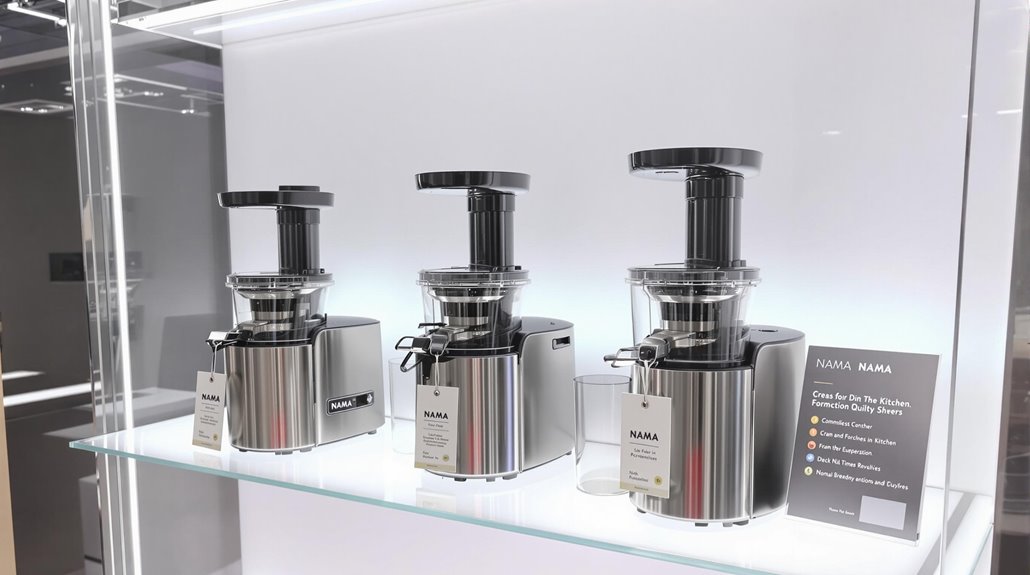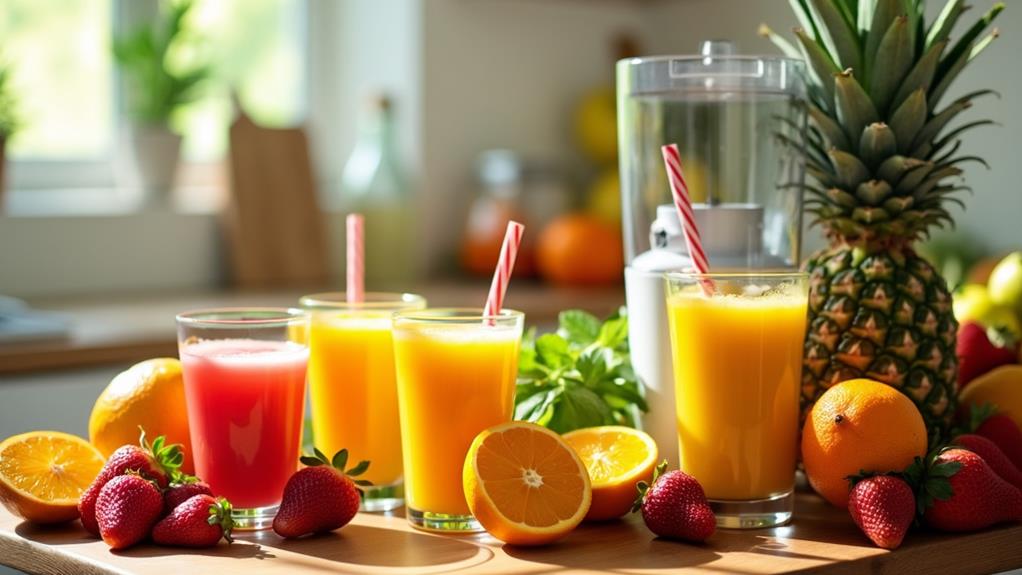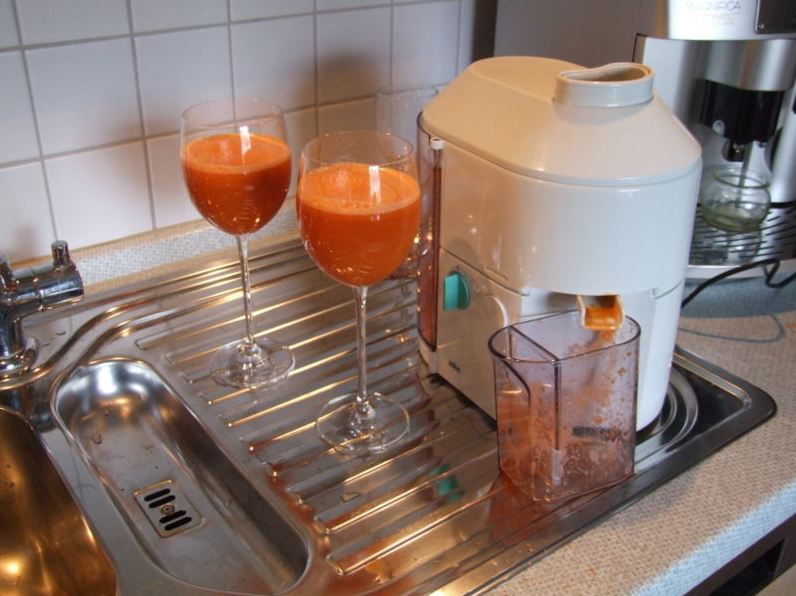Are Omega Juicers Made in China?
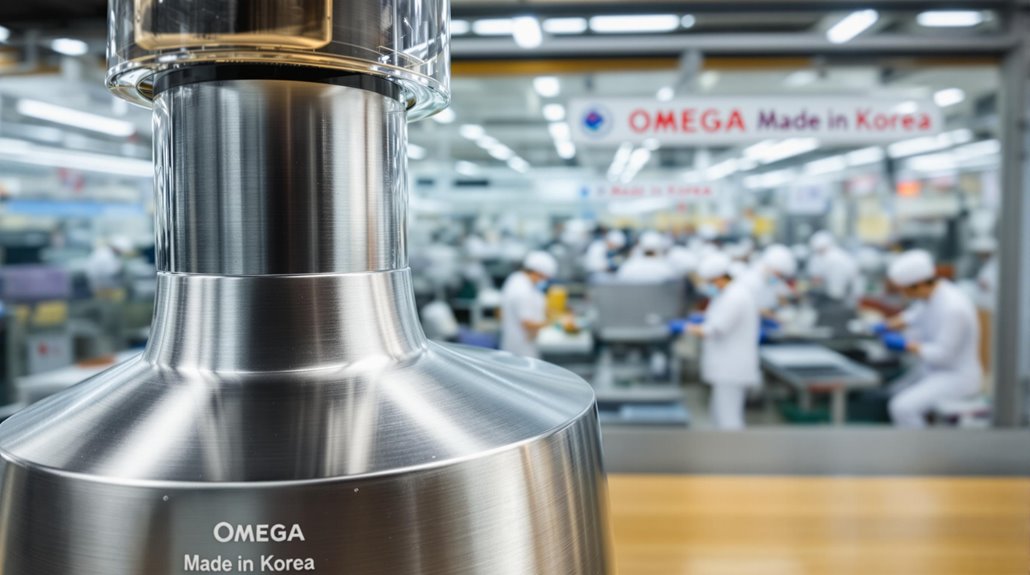
Omega juicers are chiefly manufactured in Chinese facilities, where they maintain strict quality control standards and exhaustive testing protocols. You'll find these juicers come in various configurations, from basic household models to commercial-grade units, with prices ranging from $17 to $450. While the Chinese manufacturing base allows for competitive pricing, Omega's commitment to premium quality hasn't wavered. There's more to understand about how their production approach influences the final product you receive.
Manufacturing Origins of Omega Juicers
While Omega juicers have become popular kitchen appliances worldwide, their manufacturing origins point strongly to Chinese production facilities. You'll find these fruit juice extractors listed extensively on Alibaba.com, with numerous Chinese suppliers offering various models for bulk orders. The manufacturing setup appears designed for mass production, with minimum order requirements ranging from 200 to 1,000 units.
These juicers come in different configurations, from household to commercial models, featuring both plastic and stainless steel construction. You'll notice price points varying greatly, from budget-friendly $17 models to premium versions reaching $450. The diverse range of specifications, including quiet motors and automatic pulp ejection, combined with the mass production capabilities and supplier locations, strongly suggests that Omega juicers are predominantly manufactured in Chinese facilities.
Modern electric juicers have come a long way since Dr. Norman Walker invented the first mechanical juicer in 1936.
Quality Control Standards in Chinese Production
Although concerns about Chinese manufacturing often focus on cost-efficiency, Omega's production facilities maintain strict quality control standards that rival those of Western manufacturers. You'll find that their Chinese facilities implement comprehensive quality management systems that meet international regulatory compliance requirements.
These manufacturing plants capitalize on a skilled labor pool and significant technology investments to guarantee consistent product quality. They've adopted rigorous testing protocols at every stage of production, from component inspection to final assembly. Their partnership with select Chinese suppliers demonstrates a commitment to maintaining high standards throughout the supply chain.
The continuous improvement of quality control processes and adherence to global certification standards helps certify that juicers manufactured in China meet the same reliability and performance expectations as those produced elsewhere. Taking inspiration from the twin gear extraction technology pioneered by the Greenpower Juicer in 1993, these facilities maintain high standards for nutrient preservation in their juicing equipment.
Comparing Chinese-Made Vs Other Manufacturing Locations
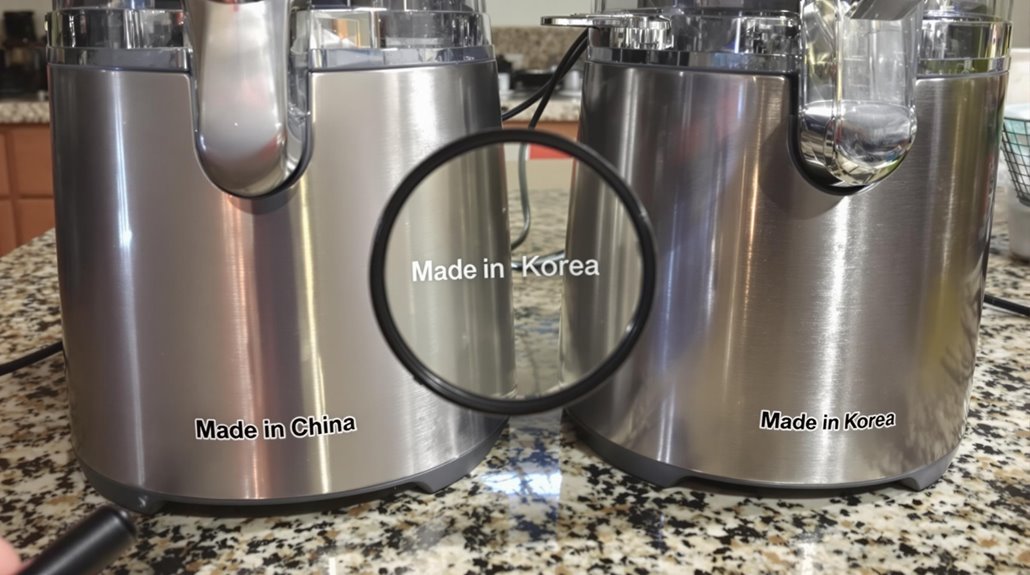
Comparing Chinese-made Omega juicers with those produced in other locations reveals several key differences in pricing, manufacturing scale, and market positioning. You'll find Chinese-manufactured models typically offer more competitive prices, ranging from $17.58 to $34.00, which can make them appealing to cost-conscious buyers.
However, when considering your purchase, you'll want to examine factors beyond price. Warranty coverage and customer support may vary depending on the manufacturing location. While Chinese production facilities can handle large-scale manufacturing with minimum orders of 200-1,000 units, other locations might focus on smaller batches with stricter quality controls. The environmental impact of shipping and production methods can also differ noticeably between manufacturing locations. Consider these aspects alongside price when deciding which Omega juicer best fits your needs. When processing tough produce, models with higher wattage motors between 800-1000 watts typically deliver better performance regardless of manufacturing location.
Key Features of Chinese-Manufactured Omega Models
Chinese-manufactured Omega juicers come packed with features that rival their counterparts from other regions. You'll find product design innovations across both household and commercial models, with options ranging from horizontal to vertical juicing mechanisms. The integration of modern technology is evident in features like quiet motors and automatic pulp ejection systems, making your juicing experience more convenient.
These juicers showcase user-friendly features through their versatile materials and functionality. You can choose between stainless steel and plastic components to match your preferences and budget, with prices ranging from $17.58 to $450.00. Whether you're juicing soft fruits or tough vegetables, these machines are designed to handle various produce types efficiently.
The competitive Chinese market has driven manufacturers to focus on quality features while maintaining affordable price points.
Cost Benefits of Chinese Manufacturing
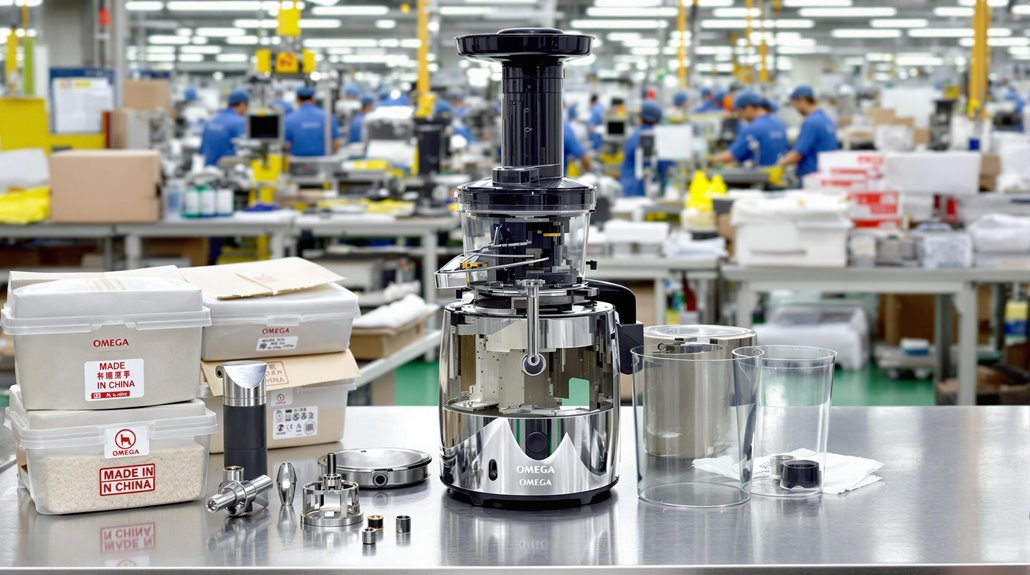
Why do major manufacturers like Omega choose China for their production needs? The answer lies in the significant cost advantages that Chinese manufacturing offers. Through labor force availability and competitive wages, Omega can maintain high-quality production while keeping costs manageable.
The benefits enable Omega to deliver premium juicers at competitive prices without compromising quality. By leveraging China's manufacturing capabilities, Omega maintains its market position while ensuring you get excellent value for your investment in their products.
Here's how Chinese manufacturing benefits Omega and ultimately you as a consumer:
- Lower production costs due to China's extensive manufacturing infrastructure and skilled workforce
- Efficient logistics optimization through well-established supply chains and material sourcing
- Cost savings from regulatory incentives and favorable government policies
- Economies of scale advantages from specialized manufacturing facilities
Supply Chain and Distribution Network
Because Omega relies on an intricate global supply chain, their juicers travel through multiple checkpoints before reaching your kitchen. Their procurement strategy involves sourcing components from various international manufacturers while maintaining strict quality control standards at each stage.
You'll find that Omega's supply chain resilience has been tested and proven, especially during recent global disruptions. They've established backup suppliers and alternative distribution channels to guarantee consistent product availability. Their network includes regional distribution centers across North America, Europe, and Asia, which helps reduce delivery times and shipping costs.
When you order an Omega juicer, it typically moves from the manufacturing facility through their established distribution channels, including authorized retailers, online marketplaces, and direct-to-consumer sales platforms. This multi-layered approach helps maintain product authenticity and customer support throughout the buying process.
Market Impact on Product Development
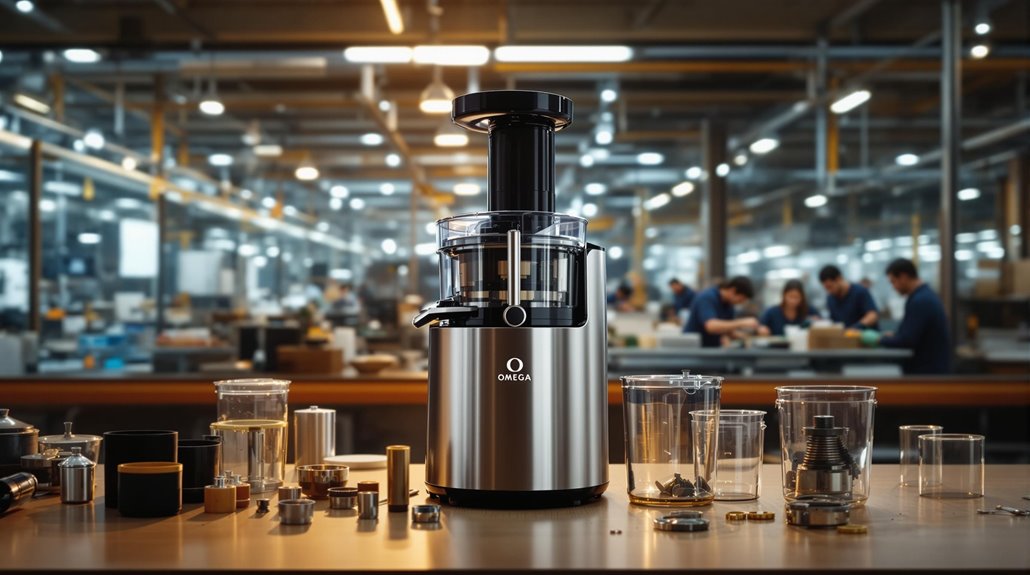
Market fluctuations have shaped Omega's product development strategy, with manufacturing capabilities in China playing a crucial/vital role in their innovation process. You'll find that Chinese manufacturing has enabled Omega to maintain competitive pricing while pursuing product innovation across diverse market segments.
The impact of Chinese manufacturing on Omega's development is evident in:
- Lower labor costs allowing for extensive product range development, from $17.58 entry-level models to $450.00 premium units
- Advanced technical capabilities supporting features like quiet motors and automatic pulp extraction
- Scalable production capacity handling large export opportunities with MOQs of 200-1,000 units
- Versatile manufacturing options offering both plastic and stainless steel variants for different market preferences
This manufacturing flexibility has helped Omega respond quickly to changing consumer demands while maintaining quality standards.
Consumer Perception and Brand Trust
Beyond manufacturing considerations, Omega's brand reputation stands on decades of consumer trust and innovation excellence. You'll find that product durability remains a cornerstone of Omega's success, with their juicers consistently receiving high marks from both home users and commercial establishments.
Their commitment to customer service quality has helped build lasting relationships with consumers, while their diverse product range meets varying needs and budgets. You can trust in Omega's brand reputation building, which spans over 40 years of plunging pure nutrition and innovative solutions. Their numerous awards and industry recognition demonstrate their dedication to excellence.
Whether you're new to juicing or an experienced enthusiast, Omega's focus on performance and reliability continues to strengthen their position as a trusted leader in the juicing industry.

